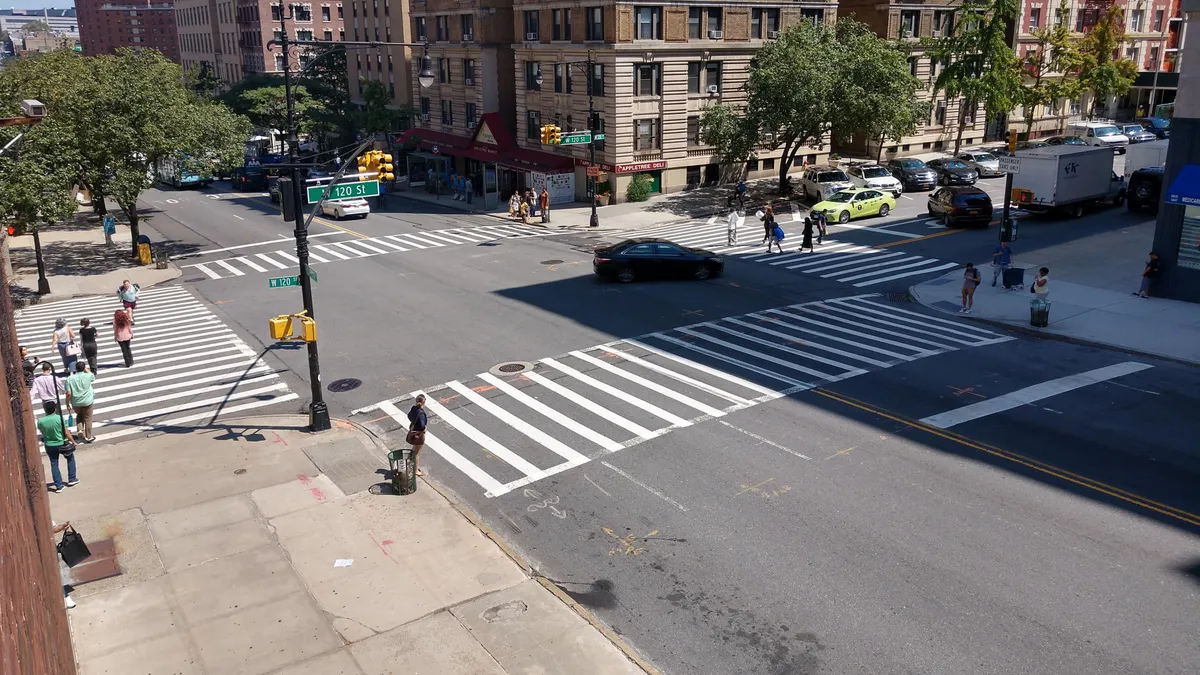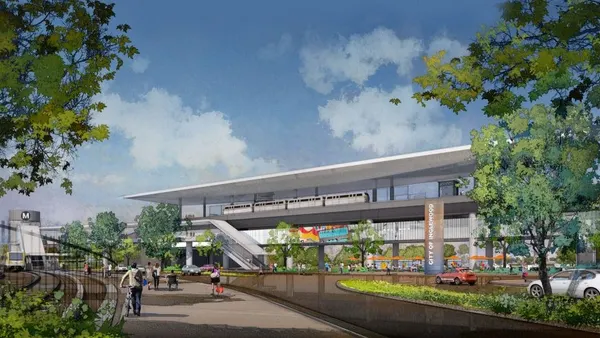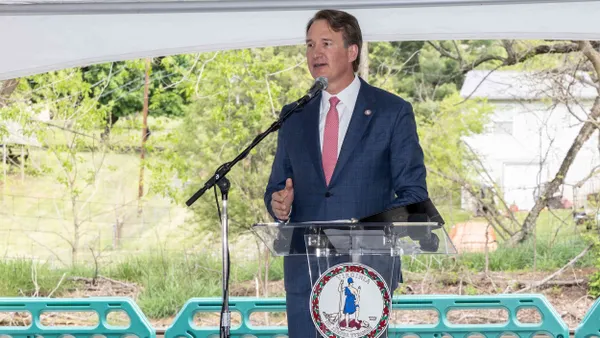Dive Brief:
- To fully maximize the congestion-busting benefits of autonomous vehicles (AVs), cities will also need infrastructure that can manage them, according to a new study from Cornell University and published in the Transportation Research Part B journal.
- The study models a "cooperative control strategy" for an intersection that takes advantage of AVs' ability to platoon and synchronizes the arrival and departure of groups of cars. In a simulation, that cooperative scenario increased the capacity of vehicles on the street up to 138% compared to conventional traffic signals.
- The study only considered a fleet of vehicles that is fully autonomous, but future research from the authors will look at infrastructure's role in maximizing efficiency for a mixed fleet.
Dive Insight:
Researchers and policymakers have talked up the potential of AVs to cut congestion, since they can travel closer together and coordinate movements (although some projections have said congestion may increase because of higher volume). However, that potential could be negated with traditional infrastructure built for human drivers, said Oliver Gao, study author and director of Cornell’s Center for Transportation, Environment, and Community Health.
"Even when all those vehicles are autonomous, they still drive on the same roads," Gao said. "Transportation is really a system, and infrastructure is a fundamental part of that. If we improve infrastructure in tandem with the vehicles, there can be tremendous environmental and public health benefits."
Gao's model imagines a stoplight that can detect the volume of cars arriving from a distance. By using a control algorithm, the stoplight could send platoons of cars through at the rate and intervals designed to maximize efficiency while also eliminating the chance of car crashes. The "coordination-based control," Gao said, wouldn’t control traffic in the way stoplights do now, but would rather work with the flow of traffic.
Although most money and energy has been focused on developing connected and autonomous vehicles, some cities have dedicated attention to the corresponding infrastructure. Austin, TX is testing traffic signals connected to vehicles at five intersections as part of a U.S. Department of Transportation challenge, and Columbus, OH has made connected infrastructure part of its Smart Columbus initiative. Detroit also boasts what it calls the "World’s Smartest Intersection," a Miovision installation that uses sensors, cameras and remote monitoring to trigger stoplight responses to certain traffic conditions.











